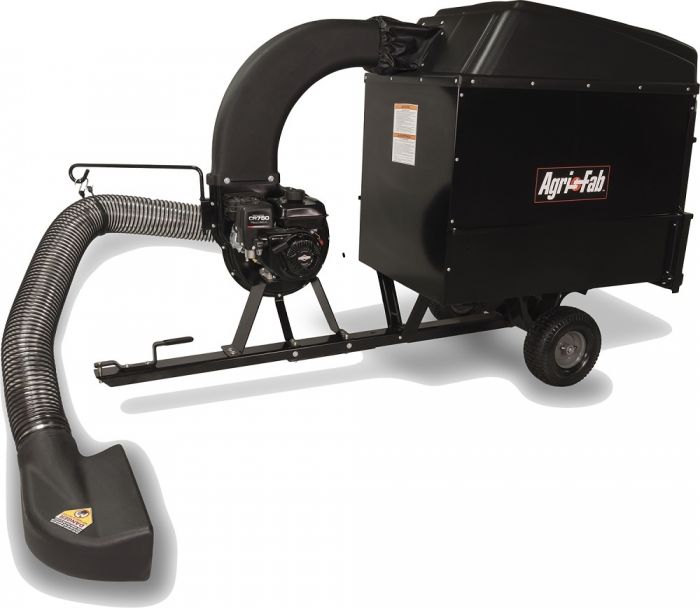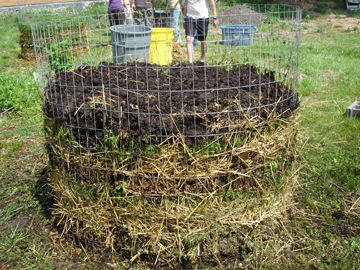Pasture and barn cleaning is an important part of herd management. A
clean environment is essential for parasite control and for the healthy growth
of your pastures. However, cleaning up is not always the most favorite and
easiest task.
The basic method of cleaning pastures, of course, is the ole' standard shovel
and rake. If your herd
 numbers
and pastures are not too large, this isn't always the grunge task. On a
nice sunny day, enjoying the quiet sounds of nature and the smells of spring and
summer, just raking away knowing that also you're getting your cardiac workout
for the day - what more could you ask for?
numbers
and pastures are not too large, this isn't always the grunge task. On a
nice sunny day, enjoying the quiet sounds of nature and the smells of spring and
summer, just raking away knowing that also you're getting your cardiac workout
for the day - what more could you ask for?
There are, however, some other mechanical methods of picking up the poo that
lama owners have discovered and put to good use. Some owners have found
that a leaf vacuum works well. Mounting the vacuum in a cart of some kind
and using a long hose, the vacuum picks up the lama beans, grinds them finely,
and deposits them into a large trash can.
Another tried and true method is using the vac system made by Agri-Fab.
It is a separate unit that can be pulled behind your riding mower or an
ATV. It has a 5 or 8 HP motor, has a 32 of 41 cubic feet capacity in the
bin, it dumps, and picks up the poo with a large hose attachment. The collected material in the bin is ground into
a fine material similar to peat moss. It feels dry and has no odor.
This unit will also vacuum up leaves and small sticks. As you might
imagine, it works much better on dry poo, but with a little practice, some moist
areas can also be vacuumed without clogging up the system.
a large hose attachment. The collected material in the bin is ground into
a fine material similar to peat moss. It feels dry and has no odor.
This unit will also vacuum up leaves and small sticks. As you might
imagine, it works much better on dry poo, but with a little practice, some moist
areas can also be vacuumed without clogging up the system.
These last two suggested methods may not be as conducive to connecting with
Mother Nature, but the task can still be turned into an enjoyable afternoon by
just getting outside in the country air and enjoying your personal selections in
your MP3
player.
Now, what to do with the collected poo. Lama manure is regarded as an
excellent plant enhancer and reportedly can be applied around your plants,
trees, and bushes without danger of burning your plants. Although to be sure,
you would have to do a chemical analysis on the manure on your farm, the
reported analysis is 1 nitrogen, 1.5 phosphorus, and 1 potassium, when dried.
Lama beans may take awhile to break down, but they're good for putting around
bushes and trees for a winter boost. With the use of a manure spreader, it
can be spread on a vacant pasture area. Don't spread it on pastures that
you use for your animals as you will possibly be adding parasite back into your
grazing areas.
Another method for enhancing your plants with your own farm deposits, is to
make llama tea. Just put some beans into a bucket, add water, and let it
seep. When dissolved, it makes a wonderful enhancing watering mixture for
your plants. If the tea is made strong, it also makes a good preventative
spray for the trunks of trees that your animals may be nibbling on. Many
llama owners either sell or give their manure away to neighboring
gardeners. One owner tell us they just make a pile out by their country
road, mark it "free to shovelers", and the pile just magically
disappears.
Composting is an easy way to use your farm manure and offers three positive
results. The chemical compounds in the manure will be rapidly stabilized
thus limiting an unfriendly impact on the environment; the manure and bedding material will produce a rich
 soil amendment;
and the material will be reduced to about 1/3rd of its original volume.
Composting is the process of organic matter decomposing in a warm, moist
environment. The heat generated with the composting process normally kills
any parasites and weed seeds. For composting you will need a stall-like
area about 3' x 3' x 3'. Fill with manure. Grasses and garden
clippings may also be added. Cover the area with a roof, tarp, or sheet of
plastic (black plastic helps generate more heat) and keep the area as damp as a
wrung out sponge. Add air to the pile by turning it occasionally.
Depending on how moist your compost pile stays and how often it is turned, your
compost will most likely be ready in a couple of months in the summer and three
to five months in the winter due to cooler temperatures slowing down the microbial activity.
You'll know when your compost is ready when your pile is reduced in size by
about 50% and when the texture is evenly crumbly like soil. Now watch your
gardens flourish!!
soil amendment;
and the material will be reduced to about 1/3rd of its original volume.
Composting is the process of organic matter decomposing in a warm, moist
environment. The heat generated with the composting process normally kills
any parasites and weed seeds. For composting you will need a stall-like
area about 3' x 3' x 3'. Fill with manure. Grasses and garden
clippings may also be added. Cover the area with a roof, tarp, or sheet of
plastic (black plastic helps generate more heat) and keep the area as damp as a
wrung out sponge. Add air to the pile by turning it occasionally.
Depending on how moist your compost pile stays and how often it is turned, your
compost will most likely be ready in a couple of months in the summer and three
to five months in the winter due to cooler temperatures slowing down the microbial activity.
You'll know when your compost is ready when your pile is reduced in size by
about 50% and when the texture is evenly crumbly like soil. Now watch your
gardens flourish!!
~~~~~~~~~~~~~~~~~~~~~~~~~~~~~~~~~~~~~~~~~~~~~~~~~~~~~~~~~~~~~~~~~~~~~~~~~~~~~~~~~~~~~~~~~~~~~~~~~~~~~~~

